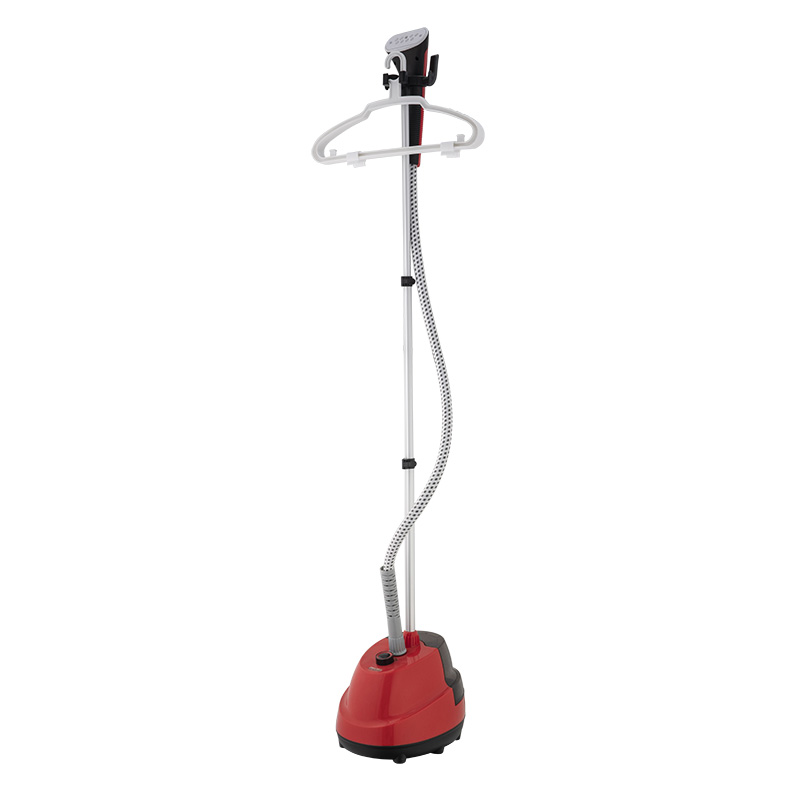
Can an upright stand garment steamer kill bacteria and viruses?
Upright stand garment steamers are not specifically designed to sanitize clothing, but the high-temperature steam that they produce can help to kill some types of bacteria and viruses. However, it's important to keep in mind that steamers are not as effective at killing germs as dedicated sanitizing appliances.What can you do to sanitize your clothing with an upright stand garment steamer?
If you want to use your upright stand garment steamer to sanitize your clothing, there are several things you can do to increase its effectiveness. First, make sure that you hold the steamer close to the fabric and move it slowly to allow the steam to penetrate all of the fibers. You can also use a steam cleaner attachment to target specific areas of your clothes where bacteria and viruses are most likely to be present.Are there any downsides to using an upright stand garment steamer to sanitize clothing?
One potential downside to using an upright stand garment steamer to sanitize your clothing is that you may not be able to kill all of the bacteria and viruses that are present. This is especially true if you are trying to sanitize items that are heavily soiled or have a lot of bacteria on them. Additionally, steamers can be time-consuming to use, so you may not be able to sanitize all of your clothing as quickly as you would like. Overall, if you are looking for a quick and convenient way to remove wrinkles and freshen up your clothing, an upright stand garment steamer is an excellent choice. While it may not be the most effective way to sanitize your clothing, it can help to kill some bacteria and viruses and keep your clothes looking clean and fresh.In conclusion, if you want to use an upright stand garment steamer to sanitize your clothing, you should take some measures to increase its effectiveness. It is important to remember that using a steam on your clothing will not kill all the bacteria and viruses, but it can certainly make your clothes look neat and clean.
Cixi Meiyu Electric Appliance Co., Ltd. is a leading manufacturer of high-quality upright stand garment steamers. Our products are designed to make your life easier and keep your clothes looking great. If you have any questions about our products or services, please don't hesitate to contact us at micheal@china-meiyu.com or visit our website at https://www.my-garmentsteamer.com.
Scientific Research Papers on Garment Steaming Technology
1. Barslund, T. H., Hansen, L. G., & Cortzen, F. (2009). Influence of Households' Appliance-Use and Dishwashing Procedures on the Faecal Microbiota Enterococci. Journal of Applied Microbiology, vol. 107, no. 5, pp. 1686–1694.
2. Jung, Y., Hemmingson, J. A., & Ramaswamy, H. S. (2009). Impact of Commercial Sanitizers on Escherichia Coli O157: H7 inactivation on Leafy Vegetables under Dynamic Treatment conditions. Journal of Food Science, vol. 74, no. 6, pp. M275–M282.
3. Chen, Q., Ananthakrishnan, G., & Kenyon, J. (2010). The Performance Evaluation of Heat-Generating Cleaning Devices in the Inactivation of Bacillus Stearothermophilus in a Bench-Scale Re-Circulating Spray Chamber. Journal of Environmental Health, vol. 72, no. 8, pp. 10–16.
4. Kupferschmidt, K. (2011). If it Heats, It Kills? Nature, vol. 479, no. 7372, pp. S4–S6.
5. Ohtomo, T., Yoshida, T., Ogawara, H., Higashijima, Y., & Kawana, A. (2011). Comparison of Sanitary Effect between Hydrogen Peroxide Gas and Stabident Liquid Sanitizers in Auricular and Gloved Hands Contamination Scenarios. Yakugaku Zasshi, vol. 131, no. 7, pp. 1003–1008.
6. Duke, J. A., Day, C. T., & Knez, P. (2012). Impact of Clean-in-Place Temperatures on the Microbiological Quality of Milk in Tankers. Journal of Dairy Science, vol. 95, no. 8, pp. 4367–4380.
7. Mugler, C. C., Zoellner, C., & Jucker, B. A. (2012). Carum carvi Essential Oil: Chemical Variability, Antifungal Activity and Wheat Quality Improvement. Journal of the Science of Food and Agriculture, vol. 92, no. 2, pp. 224–234.
8. Raso, J., Palop, A., Pagan, R., & Condon, S. (2012). Resistance of Listeria Monocytogenes to Combined Pressurization and Heat Treatment in Various Thermal and Cold Media. Applied and Environmental Microbiology, vol. 78, no. 20, pp. 7300–7308.
9. Birkbeck, T., & Fowler, J. G. (2013). Time, Temperature and Chemical Inactivation of Foodborne Pathogens in Ground Beef during Commercial Cooling. Journal of Food Safety, vol. 33, no. 4, pp. 455–464.
10. Zhang, X. L., & Zhao, Y. (2014). Resistance of Five Strains of Acid-Sensitive Escherichia Coli to a Combination of Chlorine and Oxidizing Agents. Journal of Applied Microbiology, vol. 117, no. 4, pp. 1261–1269.

